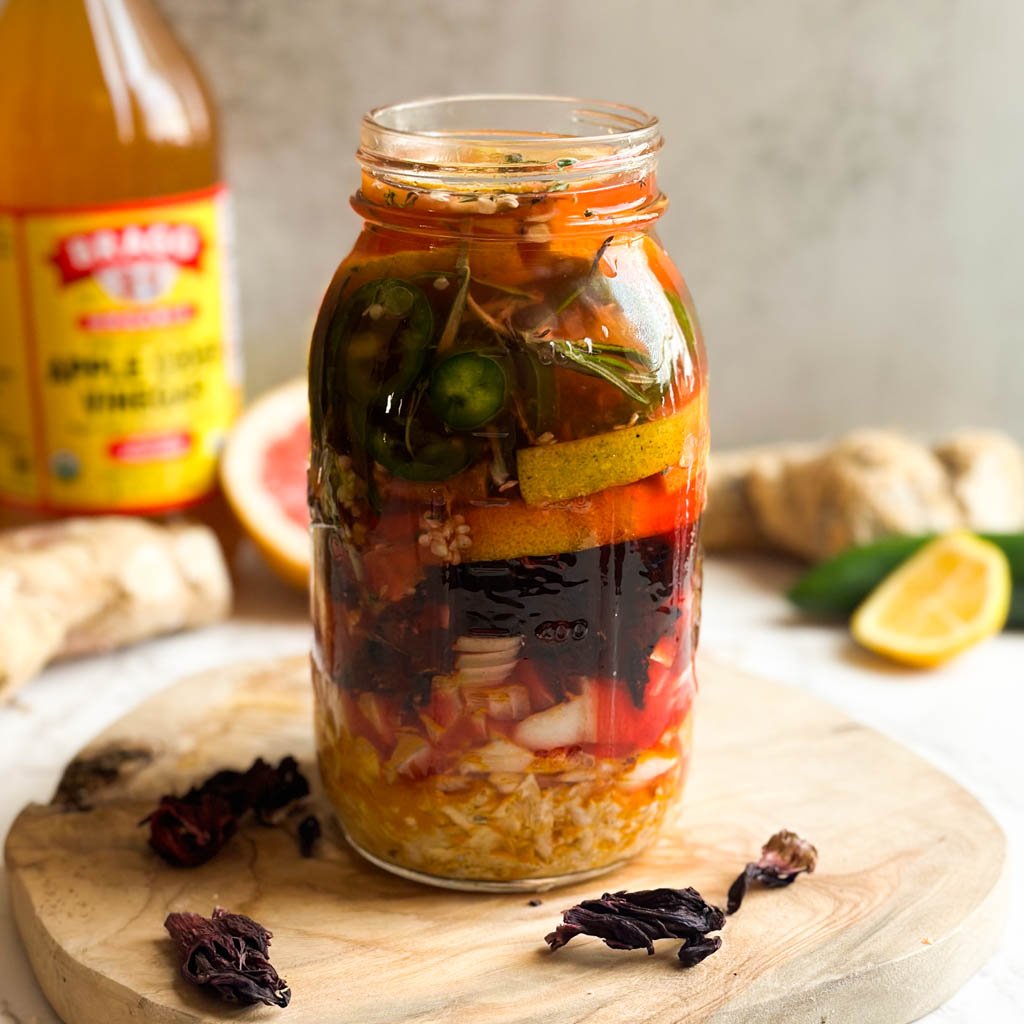Make the perfect extra-flaky, buttery gluten-free galette dough with this easy foolproof recipe! It is so good, no one would ever guess it’s gluten-free! It’s the perfect galette dough recipe—one that works wonders for both sweet and savory galette creations. Dive into the post for foolproof tips, and don’t forget to catch a glimpse of the quick video below for a step-by-step visual treat.
Once you make your galette dough, use it to make a sweet Apple Galette, Apricot Galette, or Strawberry Peach Galette. If you’re feeling savory, try making our Mushroom Galette or Vegan Ricotta and Asparagus Galette.
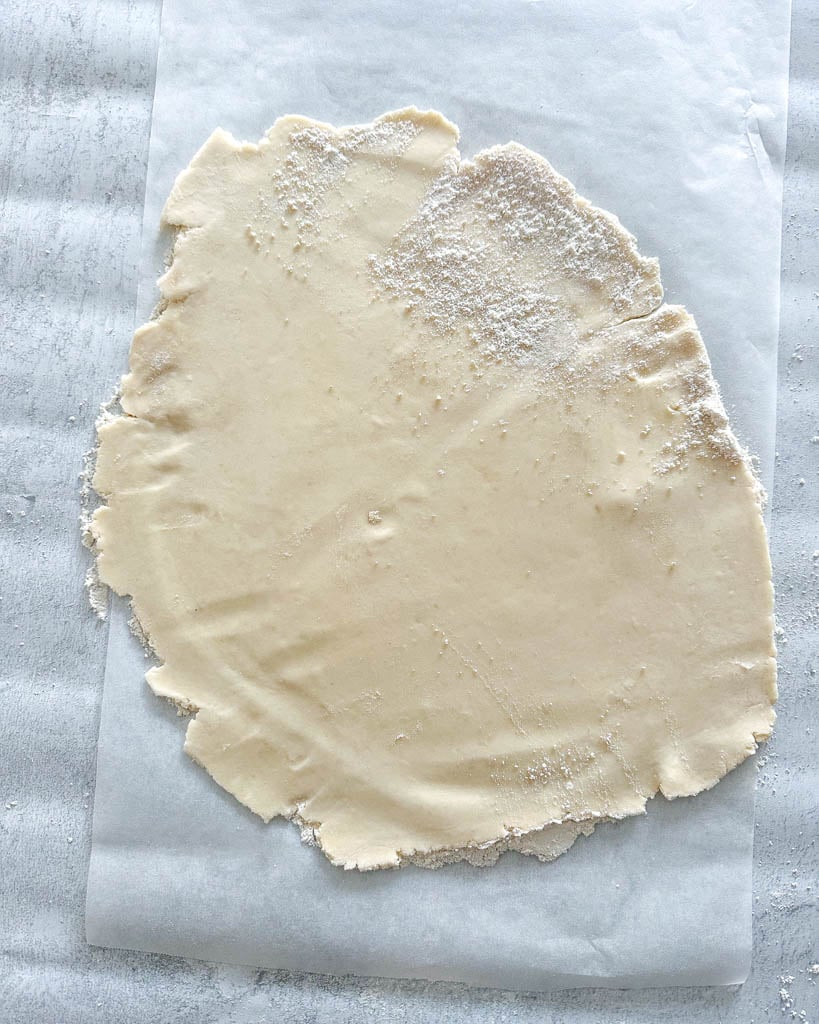
This content contains affiliate links, which help goodfoodbaddie.com to provide free recipes and resources. As an Amazon Associate, I earn from qualifying purchases. Thank you for your support of the blog!
Let’s dive into the art of crafting the perfect gluten-free galette dough. This is your ticket to creating rustic, fruit-filled, or savory galettes that are nothing short of incredible. If you’re a fan of a flaky pie crust, buckle up because this recipe is a game-changer!
What is a galette?
A galette is a French pastry crafted from a butter-based, rustic dough, and it serves as a versatile canvas for both sweet and savory fillings. It has a free-form, open-faced structure, distinguishing it from traditional pies or tarts. Its simplicity is perfect for beginner and seasoned bakers alike and allows for easy customization. It’s perfect when you’re craving the buttery flakiness of a pie, but it is half the work!
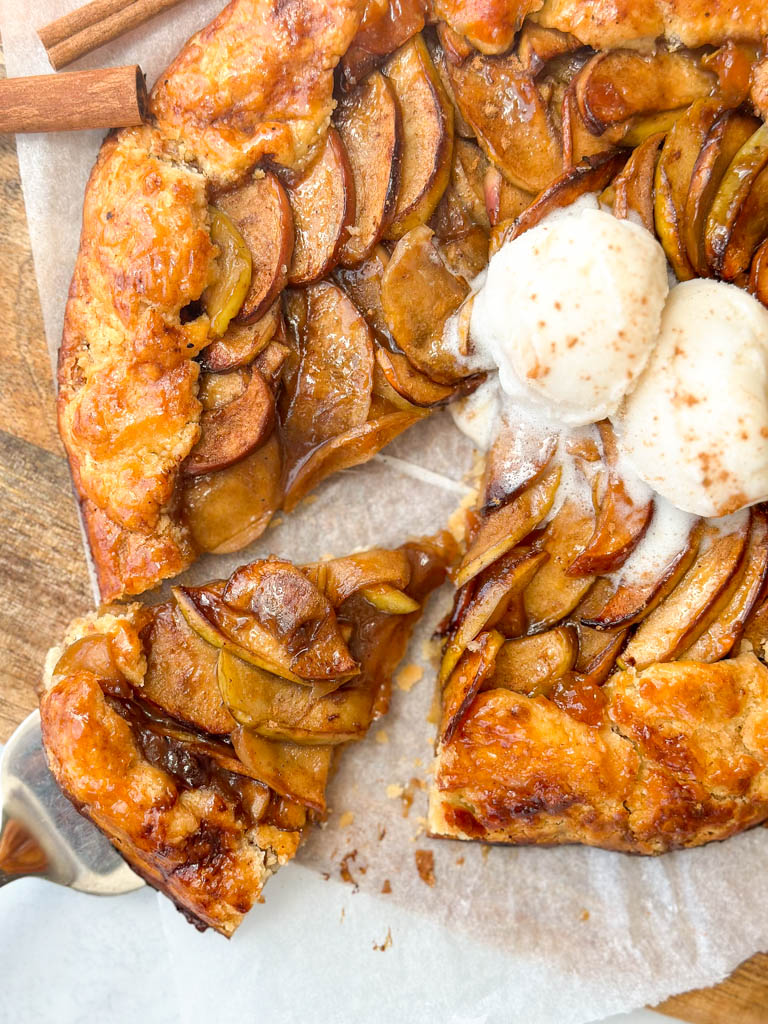
Why This Galette Dough Recipe Is a Game-Changer:
- Say goodbye to gluten without sacrificing flakiness and the best texture: I share the best flour options to use and tips to achieve the perfect texture!
- Elevate your dessert game with easy-to-make gluten-free galettes: galettes are way easier to make than double-crusted pies but offer the same great flavor!
- Transform simple ingredients into a delicious masterpiece: because galettes are essentially open pies (or pies without crust), the more rustic it looks, the better!
- Make the crust ahead of time or freeze it: save yourself time and make the crust the day before, or freeze the crust to use whenever you need!

This galette dough is:
Allergen Information: This recipe is completely gluten-free, making it a fantastic option for those with gluten sensitivities. I’ve served gluten-free galettes many times to my friends and family who don’t have any gluten sensitivity and they had no idea the galette was gluten-free! I guarantee you, that if you follow this galette dough recipe, you’ll have the perfect base to create the most delicious rustic galettes.

Ingredients For This Easy Galette Crust
This free-form dough is made with three ingredients.
- Gluten-Free All-purpose Flour: Make sure the gluten-free all-purpose flour blend that you choose contains xanthan gum. If not, add a teaspoon of xanthan gum to the flour as it helps to bind the ingredients. I’ve made successful gluten-free galette crusts with King Arthur, Measure for Measure Flour, Bob’s Red Mill Gluten Free 1-to-1 Baking Flour, and even some store-brand GF all-purpose flours.
- Butter: Use salted or unsalted butter. Make sure the butter is cold before adding it to the flour. I like to measure and cut my butter, then put it in the freezer for a few minutes before adding it to the flour. If using unsalted butter, add 1 tsp salt to the flour or salt as desired.
- Ice Water: Use ice-cold water for the best results.
Optional Add-ins:
- Granulated Sugar: I do not add sugar to my galette dough because the fillings typically have enough sugar. Plus, when I am making sweet treats I like to brush my galette crust with a tablespoon of maple syrup for an extra layer of sweetness and sometimes sprinkle sugar onto the crust for a beautiful finish.
- Spices: such as cinnamon, nutmeg, and cardamom for a sweet dessert. OR dried herbs for a savory galette.
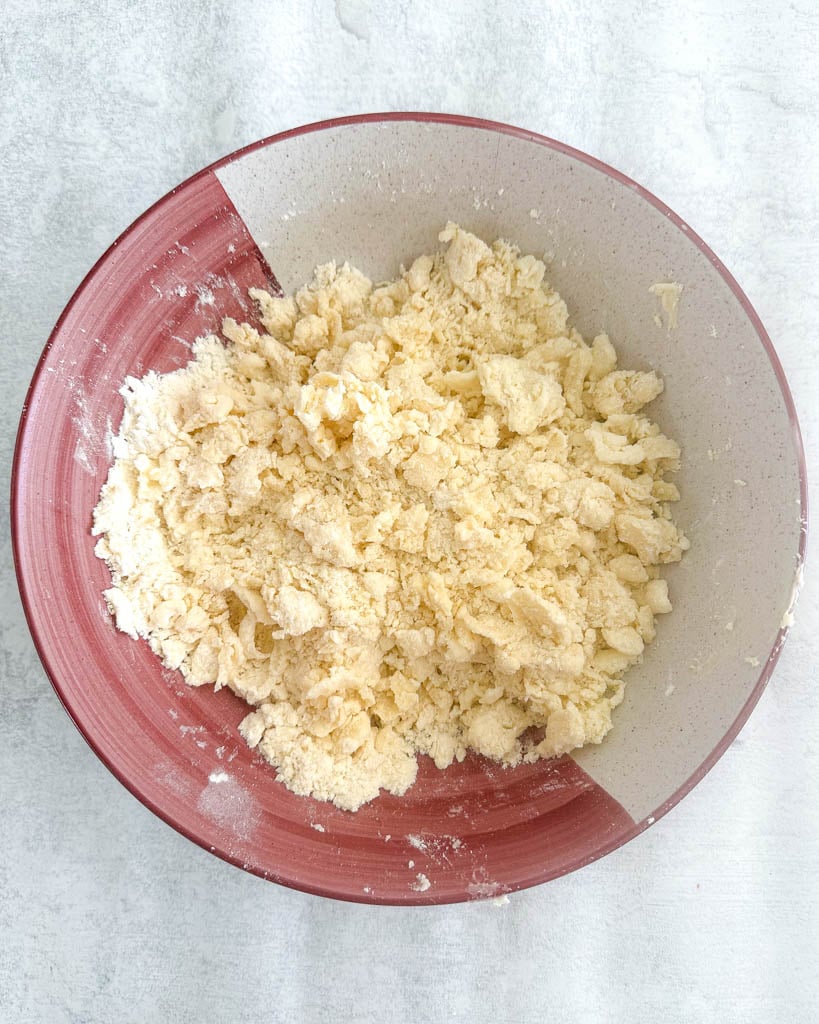
How To Make Gluten-Free Galette Dough
- In a large bowl, sift the flour (and salt if adding). Next, cut cold butter into cubes. If it is not ice cold, place the cubes of butter in the freezer for at least ten minutes.
- Using a pastry cutter or two forks, break the butter into the flour until it resembles a coarse meal with some pea-sized pieces of butter.
- Make a small pit in the center of the flour and slowly 4 tablespoons of cold water and use a spatula to mix until the dough holds together and forms a ball. If the dough does not come together or feels crumbly, feel free to add in more water 1-teaspoon at a time.
- Coat your hands in flour and begin to form the dough into a round disc. Then, wrap the dough in plastic wrap and transfer it to the fridge for at least 45 minutes before using.
- When you are ready to use the dough, remove it from the fridge. If it is hard to manipulate, let the dough sit at room temperature for 10-15 minutes before rolling it out.
- Transfer the dough onto a lightly floured surface and begin to roll out the dough into a 12-14 inch circle until it is about 1/8 – 1/4 inch thick. If needed, place a piece of parchment paper on top of the dough to help when rolling it out.
- Line a baking sheet with parchment paper. Transfer the crust onto the prepared baking sheet. Add the filling of your choice to your crust, making sure to leave at least a 1-2 inch border. Fold the border over the filling, then brush with egg wash to achieve a golden crust.
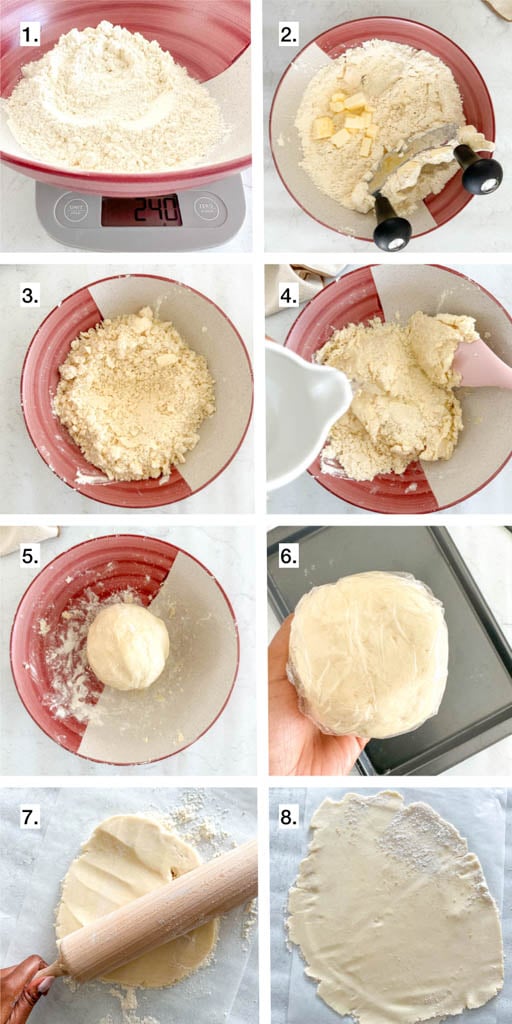
How long to bake a galette
The baking duration varies depending on the specific recipe, but typically, galette recipes require a preheated oven set at 375°F degrees and bake for 35-45 minutes.

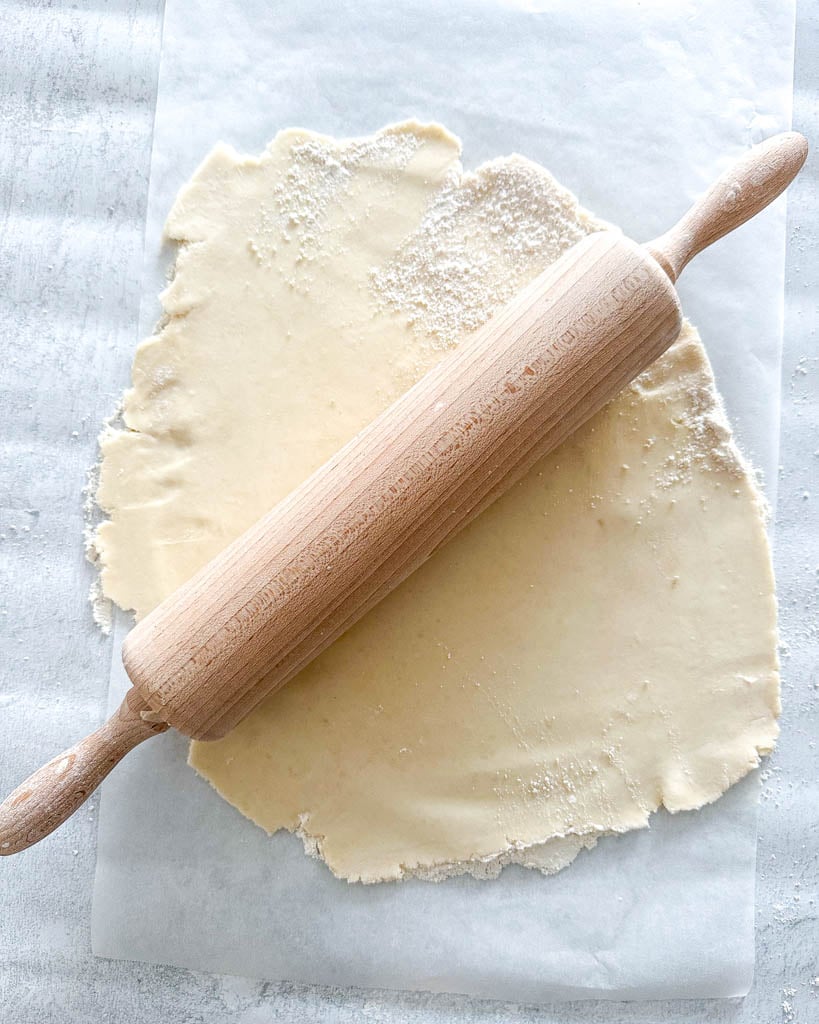

Tips To Make The Best Galette Dough
- Measure your flour with a scale for the best results. If you do not have a scale, use the spoon method to measure your flour: Use a spoon to scoop the flour into a measuring cup. Then use the back of a knife to level off the top of the measuring cup. Please do not scoop the flour directly out of the bag with a measuring cup.
- Use COLD BUTTER. You can measure and cut your butter, then put it in the freezer to chill before adding it to the flour. To mix the butter into the flour use a pastry cutter or two forks. Alternatively, you can measure the butter, freeze it, then use a cheese grater to grate the butter into small pieces and add to the flour.
- Use High-Quality Butter. The butter is what gives the crust its warm delicious flavor. Make sure to use high-quality butter like Plugra European Style Butter, Kerrygold Pure Irish Butter, or Vital Farms Butter. (A great plant-based option is MIYOKO’S CREAMERY Organic Vegan Butter)
- Make by hand (my preferred method) or use a food processor. If you have a food processor handy, you can quickly use it to make the galette dough. To make it in the food processor you first will pulse the measured flour and salt together, then add the cold butter and pulse until the butter is broken down into small pieces. Lastly, you’ll pulse while slowly adding water, 1 tablespoon at a time until the dough forms. Once it does, remove it from the food processor and form a ball.
- Let the dough rest in the fridge. The temperature of the dough is key to creating the best flaky crust. As you manipulate the dough when adding the butter, while only slightly, the dough is inevitably warmed. It is important to put the formed dough into the fridge to chill before rolling it flat to avoid sticky dough with melted butter. Form the dough into a ball or disc, then wrap it tightly with plastic wrap and let it sit in the fridge for at least 45 minutes up to 2 days.
- Roll the crust to about 1/8 inch to 1/4 inch thick. Another key to the best galette is to make sure the crust is not too thick. It should be thin so that when it is baked it will be nice and flaky, not gummy or chewy.
- For a gorgeous glossy finish, brush apricot jam on top. When making a sweet galette, immediately after it is done baking brush apricot jam on the crust and filling to give your galette that beautiful golden glow like the pastries you see in fancy pastry shops!
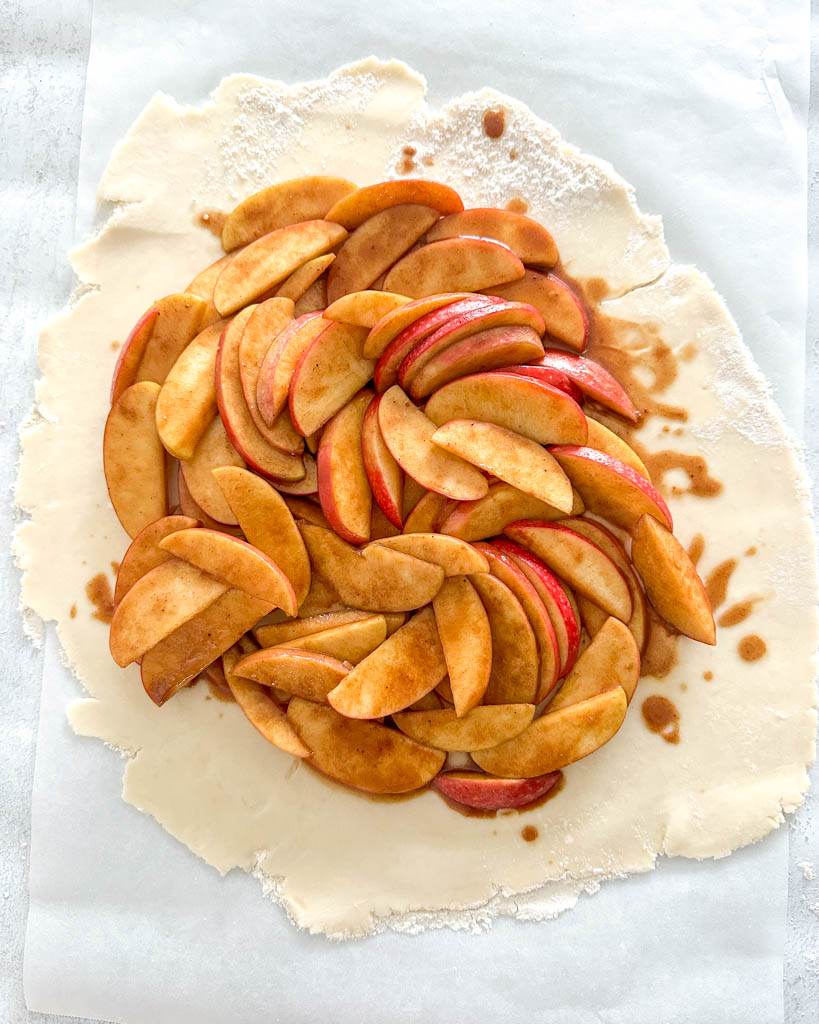
Frequently Asked Questions
What if my galette is too crumbly?
If your galette dough does not come together easily and crumbles, add a little more water, about 1 teaspoon at a time, until your pastry has come together. Mix with a spatula as you add the water
How do you fold a galette crust?
Add the ingredients for the galette in the center and cover the dough, making sure to leave about a 2″ (two-inch) border around the perimeter. Then, using floured hands or a spatula, work your way around the dough and fold the galette dough inward over the filling.
Can I use this recipe for pie crust?
Certainly! This particular galette dough recipe would work just as well for making a pie. Double the ingredients if you want to make a double-crust pie.
Can I make the dough ahead of time?
Yes, you can! Wrap your raw galette dough in plastic wrap and store it in the fridge for up to 2 days. You can also freeze it for later use. Just be sure to wrap it tightly to prevent freezer burn and allow the dough to thaw before rolling it out and using it.
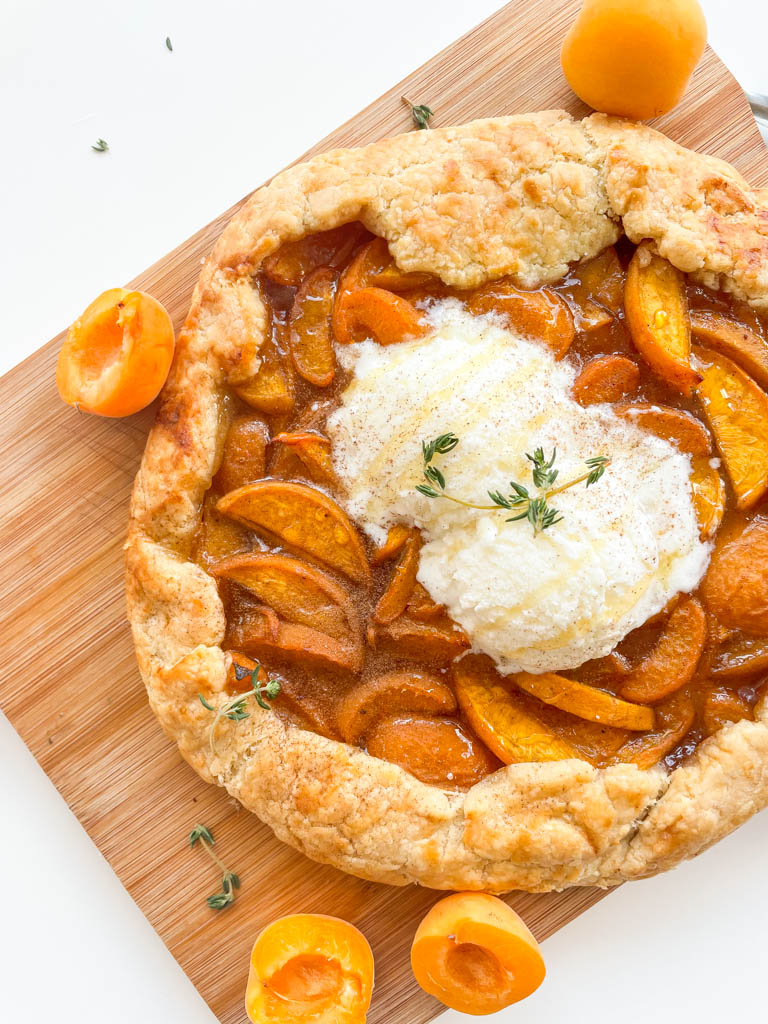
Ways To Use Your Galette Dough (our fav galette recipes!)
- Apple Galette: Filled with perfectly caramelized apples covered in warm spices like cinnamon, cardamom, and nutmeg. This is the perfect dessert for all year round, especially the holiday season. Trust us, making an apple galette is ten times easier than an apple pie. 😉
- Strawberry Peach Galette: This flavor combo is a match made in heaven. the peaches and strawberries are coated in honey and then baked until soft and sweet. This dessert is not only delicious but very impressive with its ultra-aesthetic strawberry roses.
- Apricot Galette: Sweet, tart, juicy, buttery. This stone-fruit galette is the best recipe when you want a summer treat. Use apricots or any stone fruits you like to make this sweet galette recipe.
- Mushroom Galette: Craving something savory? This mushroom galette is filled with a mixture of oyster, crimini, and portobello mushrooms. The addition of freshly grated parmesan and fresh thyme make this galette incredibly drool-worthy!
- Vegan Ricotta and Asparagus Galette: Want a completely vegan option for dinner? This flavorful ricotta and asparagus galette is made with tofu ricotta, vibrant asparagus, and topped with lemon zest for a tasty treat that is perfect for lunch or dinner.

I hope you enjoy this Gluten-Free Galette Dough Recipe!
If you try it, we’d love to see what kind of delicious galette you make! Take pictures, tag #goodfoodbaddie, and share them with me on Instagram, Facebook, and Pinterest! I love seeing my recipes come to life in your kitchen.
More Helpful Guides:
- How to Make Cashew Cream Sauce
- How To Make The Best Gluten-free Meatballs
- Duck Eggs 101 + How To Cook Duck Eggs
- How To Go Gluten-Free For Beginners
- 15 Best Superfoods For Smoothies
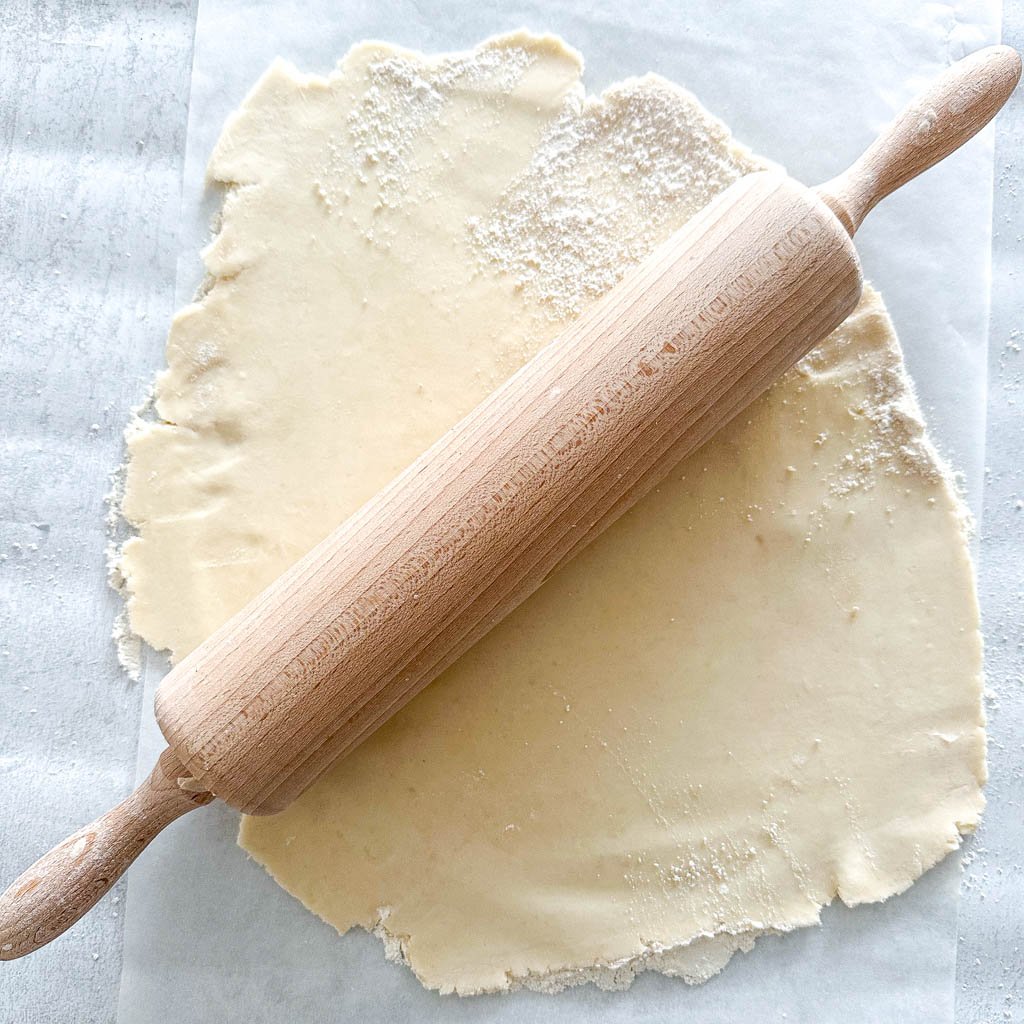
How To Make Gluten-Free Galette Dough
Equipment
- Pastry Cutter or two forks
Ingredients
- 2 cups Gluten-Free All Purpose Flour (that contains xanthan gum) (250 grams) can sub with regular all-purpose flour
- 8 tablespoons Cold Butter
- 4 tablespoons Ice Cold Water plus more if needed (add 1 teaspoon at a time)
- 1 teaspoon Sea Salt if using unsalted butter
Optional Add-ins
- 1-2 tablespoons Granulated Sugar
- 1 teaspoon Cinnamon
- 1/2 teaspoon Cardamom
Instructions
- In a large bowl, sift the flour (and salt if adding). Next, cut cold butter into cubes. If it is not ice cold, place the cubes of butter in the freezer for at least ten minutes.
- Using a pastry cutter or two forks, break the butter into the flour until it resembles a coarse meal with some pea-sized pieces of butter.
- Make a small pit in the center of the flour and slowly 4 tablespoons of cold water and use a spatula to mix until the dough holds together and forms a ball. If the dough does not come together or feels crumbly, feel free to add in more water 1-teaspoon at a time
- Coat your hands in flour and begin to form the dough into a round disc. Then, wrap the dough in plastic wrap and transfer it to the fridge for at least 45 minutes before using. When you are ready to use the dough, remove it from the fridge. If it is hard to manipulate, let the dough sit at room temperature for 10-15 minutes before rolling it out
- Transfer the dough onto a lightly floured surface and begin to roll out the dough into a 12-14 inch circle until it is about 1/8 – 1/4 inch thick. If needed, place a piece of parchment paper on top of the dough to help when rolling it out
- Line a baking sheet with parchment paper. Transfer the crust onto the prepared baking sheet. Add the filling of your choice to your crust, making sure to leave at least a 1-2 inch border. Fold the border over the filling, then brush with egg wash to achieve a golden crust.
Video



